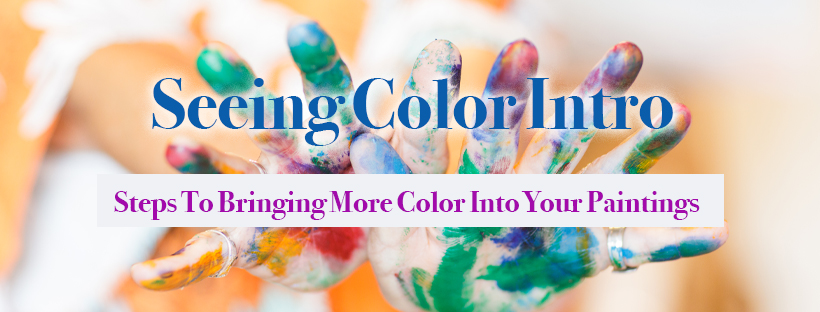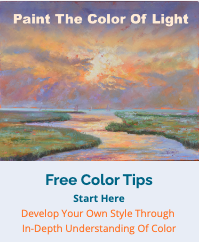
Brushstrokes of Light:
Exploring the Journey of Fine Art Oil Painting with Julie Brayton
Color and Light or more accurately The Color OF Light.
What’s the difference? What does The Color Of Light mean? Have you ever noticed the difference in color between grass in the sun and grass in shade?
No doubt your brain automatically went to light green grass and dark green grass.
I started out that way also. I have been painting since I was 13. My painting objective was to paint exactly what I saw. Over time I developed my abilities to draw and manipulate paint to achieve that goal. As I mastered that goal, I started to feel something was missing. I didn’t want to just copy, I wanted to express myself and show creativity in my work. This led me down the path of learning to see how light affects color. With different atmospheres, the color of things show up differently.
Monet was one of the impressionists that took this to a whole new level in his day. His goals were more about color than value. Not that value doesn’t have its place but value, which is the lightness or darkness of something, comes naturally through the use of color. Look at the examples of these photos of scenes in different light conditions.
In Photo #1, from left to right, the sharp sunny day is the easiest to decipher.
There are four major components we need to look for when capturing the color of light.
- Hue/color
- Temperature
- Value
- Saturation
Notice the greens in the Photo #2 sunflower image at sunset versus the grass in the photo #3 cloudy, stormy day. Would you say there is a difference in color for the grass? Or what about the #2 Sunflowers grass versus the #1 sunny field path? There is more than just light and dark. There is actual color differencs. The two photos on the right end show even differnt light conditions effecting the objects below.
So how do we describe the different light conditions? We naturally have the tendency to go for what’s called “local color”. All objects absorb light rays in such a way that an identifiable color emerges. Thus Green Grass, Blue Ocean, Red Boat. When that red boat is hit by the sun creating a shadow area and a sunlit area are they both just red? Or a dark red and a light red?
Not in the colorist, impressionist world.
Give a hand at painting this way by trying out my free How To Paint A Wave Tutorial Below!
What are you’re objectives with painting? Respond To this email. I would love hear your feedback!
Take Care For Now!
For Free Tips And Tutorials, Follow My YouTube Channel Here
My Why
My goal or mission is to bring reminders and connection to the importance each individual has through the connection to nature. How we all can honor the essence of who we have always been meant to be. Creativity, whether through collecting art or creating it, is a healing force that allows us to embrace, tell and own our stories in a transformative and ultimately joyful way.
How does nature and art make you feel? Would painting add another dimension for you?
Comment below.
I would love to hear from you!










